Abstract
From 30 actinomycete cultures isolated by enrichment technique on agar media containing newsprint as a primary carbon and energy source, three Streptomyces strains were selected for characterization of their lignocellulose-decomposing abilities. All three streptomycetes were capable of oxidizing specifically 14C-labeled lignocelluloses to 14CO2. These Streptomyces were shown to attack primarily the cellulosic (glucan) components, of which between 25 to 40% evolved as 14CO2 during 1,025 h of incubation depending upon the culture used. Lignin labeled lignocelluloses were also attacked, but to a lesser degree, with up to about 3.5% being oxidized to 14CO2 depending upon the culture used. Additionally, it was shown that purified 14C-labeled milled-wood lignin was attacked, with recoveries of up to 17.7% of the label was 14CO2. This is the first conclusive evidence to show that streptomycetes can decompose lignin.
Full text
PDF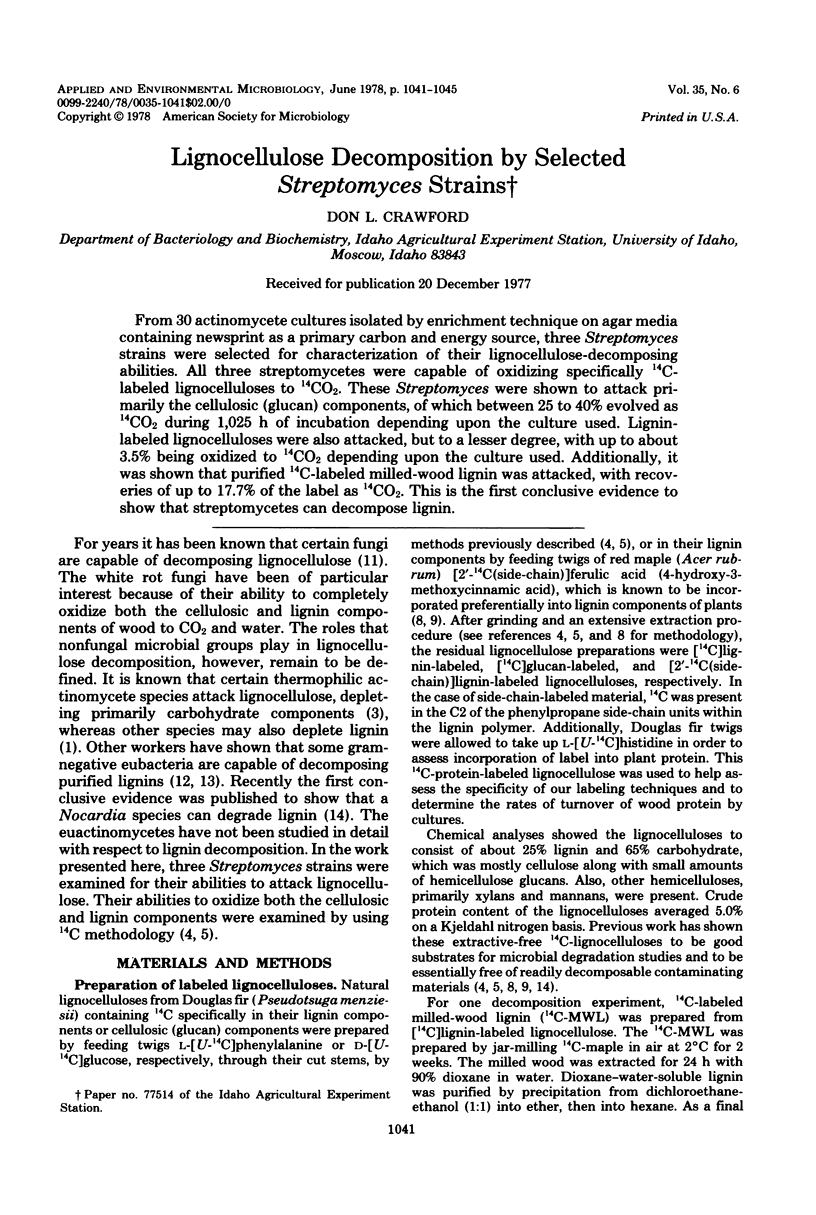
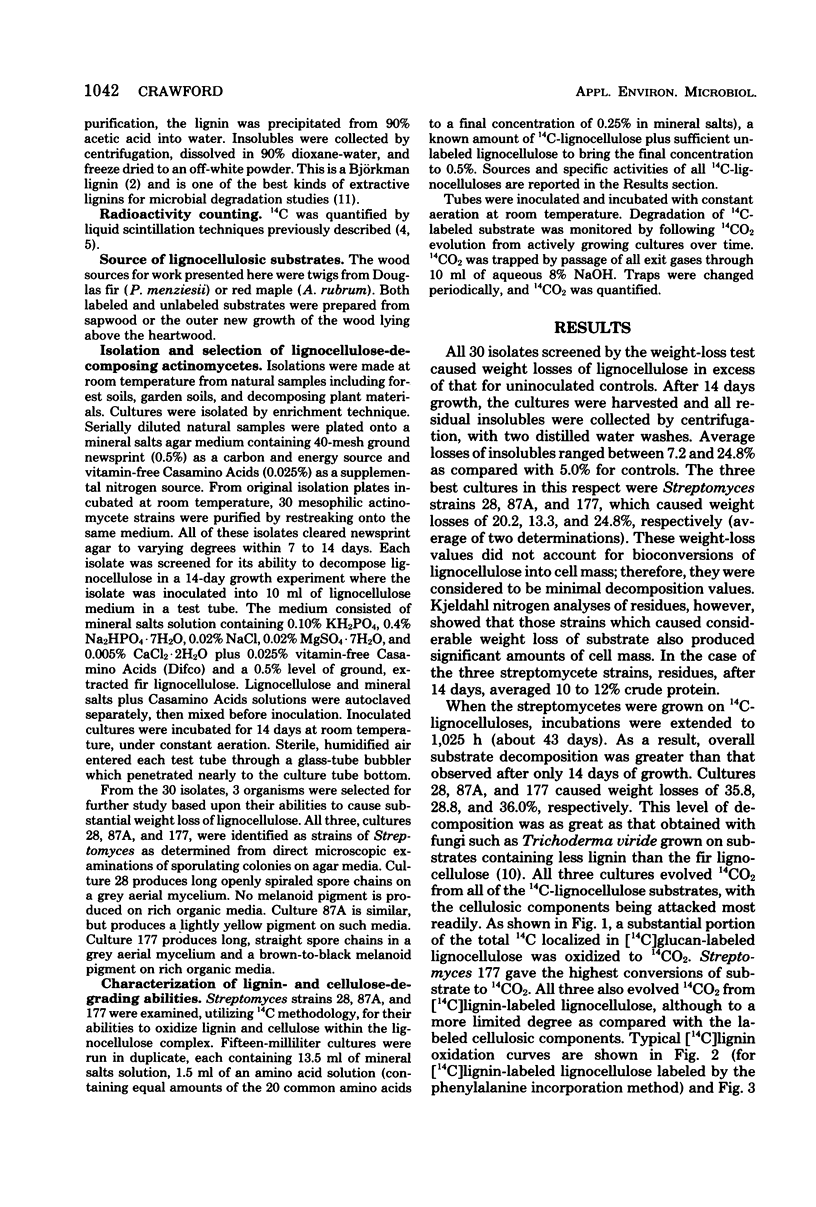
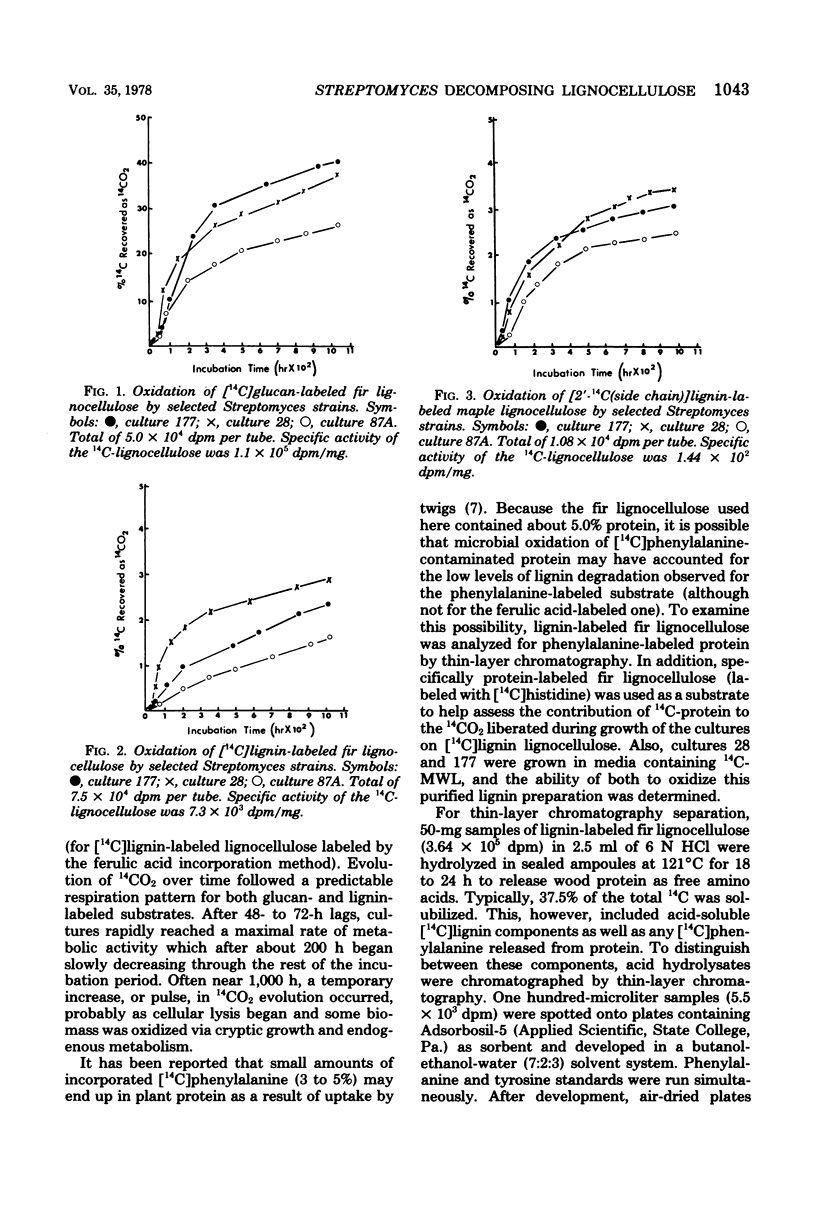
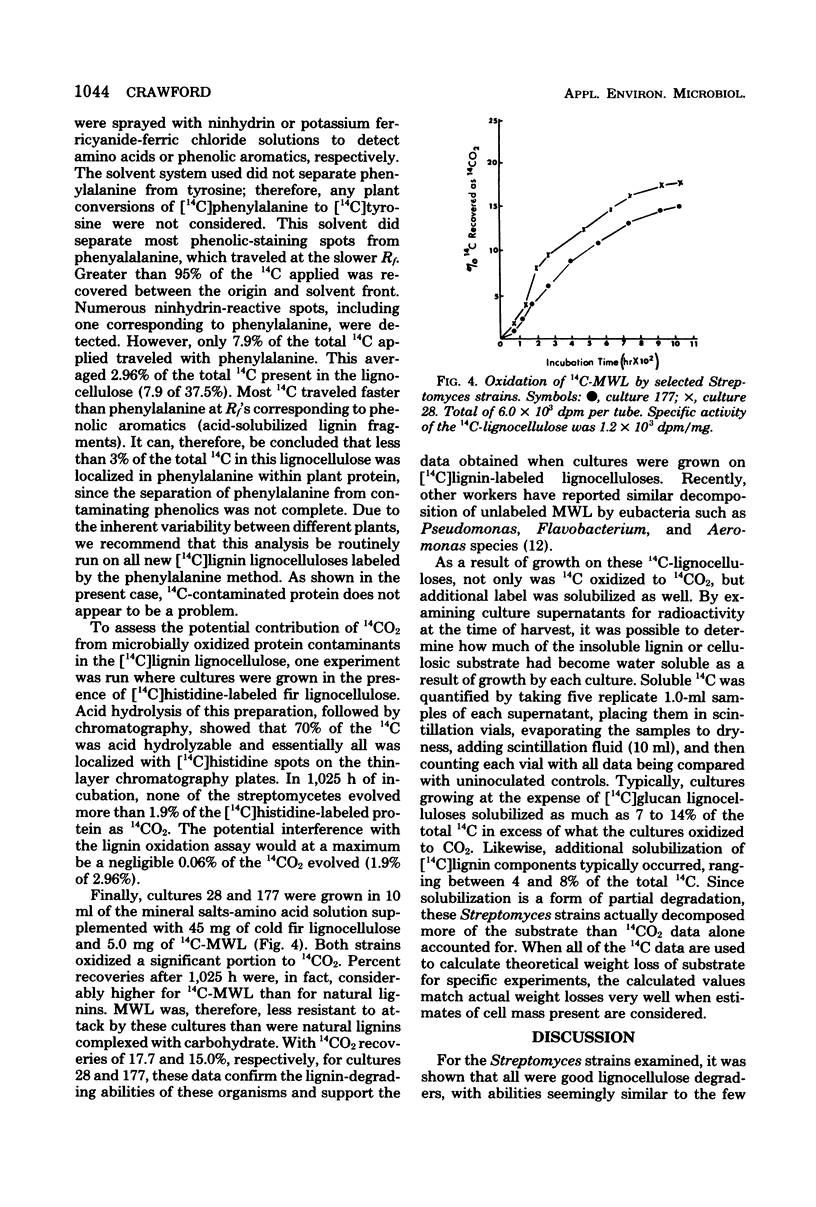
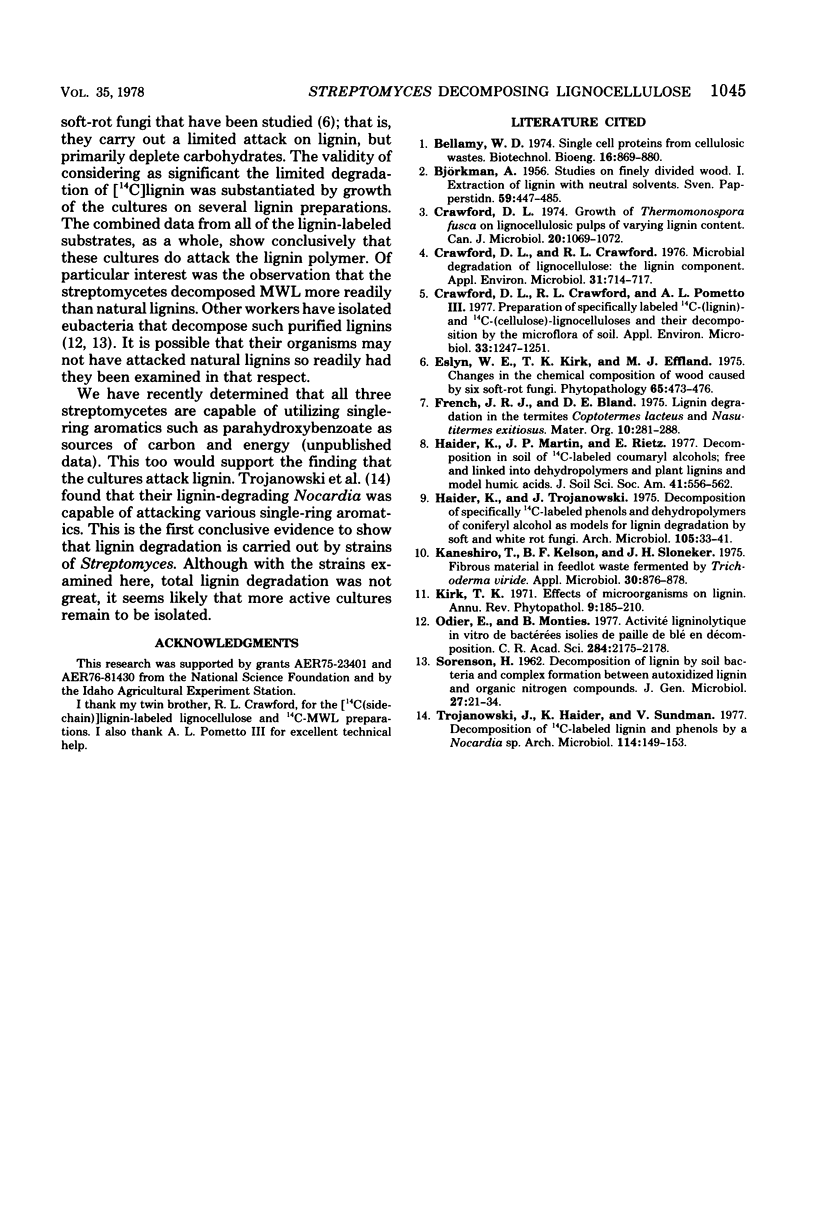
Selected References
These references are in PubMed. This may not be the complete list of references from this article.
- Bellamy W. D. Biotechnology report: single cell proteins from cellulosic wastes. Biotechnol Bioeng. 1974 Jul;16(7):869–880. doi: 10.1002/bit.260160702. [DOI] [PubMed] [Google Scholar]
- Crawford D. L., Crawford R. L. Microbial degradation of lignocellulose: the lignin component. Appl Environ Microbiol. 1976 May;31(5):714–717. doi: 10.1128/aem.31.5.714-717.1976. [DOI] [PMC free article] [PubMed] [Google Scholar]
- Crawford D. L., Crawford R. L., Pometto A. L. Preparation of specifically labeled C-(lignin)- and C-(cellulose)-lignocelluloses and their decomposition by the microflora of soil. Appl Environ Microbiol. 1977 Jun;33(6):1247–1251. doi: 10.1128/aem.33.6.1247-1251.1977. [DOI] [PMC free article] [PubMed] [Google Scholar]
- Crawford D. L. Growth of Thermomonospora fusca on lignocellulosic pulps of varying lignin content. Can J Microbiol. 1974 Jul;20(7):1069–1072. doi: 10.1139/m74-167. [DOI] [PubMed] [Google Scholar]
- Kaneshiro T., Kelson B. F., Sloneker J. H. Fibrous material in feedlot waste fermented by Trichoderma viride. Appl Microbiol. 1975 Nov;30(5):876–878. doi: 10.1128/am.30.5.876-878.1975. [DOI] [PMC free article] [PubMed] [Google Scholar]
- Rowan A. J., Pippenger C. E., McGregor P. A., French J. H. Seizure activity and anticonvulsant drug concentration. Arch Neurol. 1975 May;32(5):281–288. doi: 10.1001/archneur.1975.00490470025002. [DOI] [PubMed] [Google Scholar]
- SORENSEN H. Decomposition of lignin by soil bacteria and complex formation between autoxidized lignin and organic nitrogen compounds. J Gen Microbiol. 1962 Jan;27:21–34. doi: 10.1099/00221287-27-1-21. [DOI] [PubMed] [Google Scholar]
- Trojanowski J., Haider K., Sundman V. Decomposition of 14C-labelled lignin and phenols by a Nocardia sp. Arch Microbiol. 1977 Aug 26;114(2):149–153. doi: 10.1007/BF00410776. [DOI] [PubMed] [Google Scholar]


